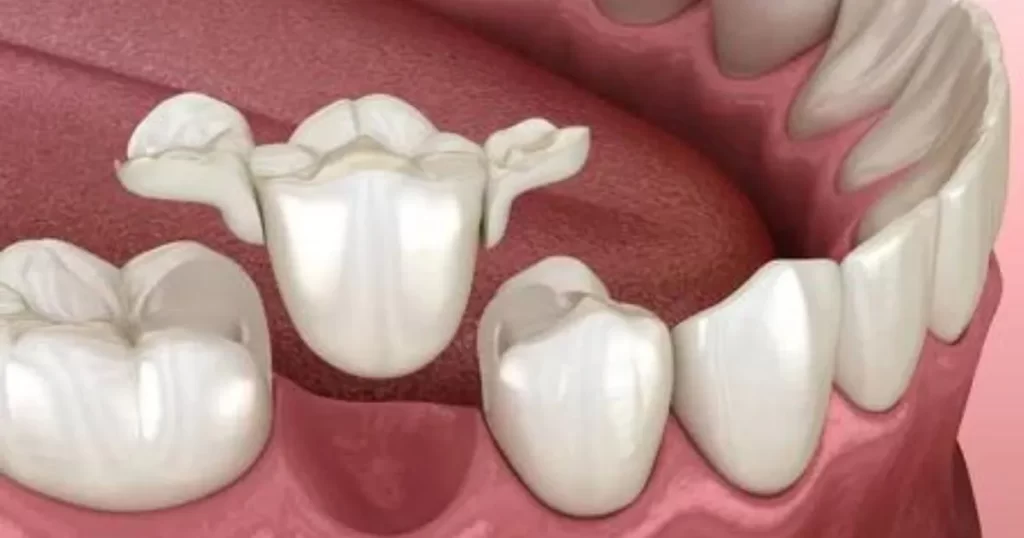Maryland Bridges
- Home
- Dental Bridges
- Maryland Bridges
If you are missing one or more teeth, you may be considering a dental prosthesis to restore your smile and improve your oral health. One popular option is the Maryland bridge, also known as a resin-bonded bridge or a Maryland bonded bridge. In this article, we will explore what Maryland bridges are, how they work, their advantages and disadvantages, and how to care for them.

Maryland dental bridges are a type of dental prosthesis used to replace one or more missing teeth. Unlike traditional bridges, which require the adjacent teeth to be shaved down to accommodate the bridge, Maryland bridges are held in place by a metal or ceramic framework that is bonded to the back of the adjacent teeth using a resin cement. This means that the adjacent teeth do not need to be altered or crowned, which can help preserve their natural structure and function.
Maryland bridges can be made from a variety of materials, including metal alloys, ceramics, and composite resin. The choice of material will depend on several factors, including the location of the missing teeth, the patient’s bite and chewing habits, and their aesthetic preferences.
Maryland dental bridges consist of a metal or ceramic framework that is custom-fitted to the patient’s teeth. The framework has wings on either side that are bonded to the back of the adjacent teeth using a resin cement. The missing tooth or teeth are then attached to the framework using a resin or composite material that is color-matched to the patient’s natural teeth.
Maryland bridges rely on the strength of the resin cement to hold them in place, rather than the adjacent teeth. This means that the bridge can be easily removed or replaced if necessary, without affecting the adjacent teeth.
There are several advantages to choosing a Maryland dental bridge over other types of dental prostheses, including:
Preservation of natural teeth: Because Maryland bridges do not require the adjacent teeth to be shaved down or crowned, they can help preserve the natural structure and function of those teeth.
Aesthetics: Maryland bridges can be made from a variety of materials that can be color-matched to the patient’s natural teeth, making them a highly aesthetic option for replacing missing teeth.
Minimal invasiveness: Maryland bridges are less invasive than other types of bridges or dental implants, which can require surgery or extensive preparation of the adjacent teeth.
Cost-effective: Maryland bridges can be a cost-effective option for replacing missing teeth, as they are generally less expensive than other types of bridges or dental implants.
There are also some disadvantages to choosing a Maryland dental bridge, including:
Limited durability: Maryland bridges may not be as durable as other types of dental prostheses, such as traditional bridges or dental implants. The resin cement used to bond the bridge to the adjacent teeth may weaken over time, causing the bridge to come loose or fall out.
Limited suitability: Maryland bridges may not be suitable for all patients, particularly those with a heavy bite or those who grind or clench their teeth. In these cases, a more durable dental prosthesis, such as a traditional bridge or dental implant, may be recommended.
Difficulty with oral hygiene: Maryland bridges can be more difficult to clean than other types of dental prostheses, as the metal or ceramic framework can trap food particles and bacteria, increasing the risk of tooth decay and gum disease.
Higher risk of tooth fracture: Because Maryland bridges rely on the strength of the resin cement to hold them in place, there is a higher risk of the adjacent teeth fracturing or chipping.
Proper care and maintenance of a Maryland dental bridge can help to ensure its longevity and reduce the risk of complications. Here are some tips for caring for a Maryland bridge:
Brush and floss regularly: It is important to brush your teeth twice a day and floss at least once a day to remove food particles and plaque from your teeth and bridge. Use a soft-bristled toothbrush and fluoride toothpaste, and be sure to floss carefully around the bridge to remove any debris that may be trapped.
Use a Waterpik: A Waterpik can be a useful tool for cleaning around a Maryland bridge, as it uses a stream of water to remove debris from hard-to-reach areas.
Avoid hard, sticky, or chewy foods: These types of foods can put extra stress on the bridge and increase the risk of it coming loose or breaking.
Wear a mouthguard: If you grind or clench your teeth, wearing a mouthguard at night can help to protect the bridge and prevent damage to your teeth.
Schedule regular dental check-ups: Regular dental check-ups are important for maintaining good oral health and detecting any problems with your Maryland bridge early on. Your dentist can also clean and polish the bridge to keep it looking and functioning its best.
Maryland bridges can be a great option for patients who are missing one or more teeth and want to restore their smile and oral health. While there are some disadvantages to choosing a Maryland dental bridge over other types of dental prostheses, the preservation of natural teeth, aesthetic appearance, minimal invasiveness, and cost-effectiveness make it a popular choice for many patients.
If you are considering a Maryland bridge or other type of dental prosthesis, it is important to consult with a qualified dental professional who can help you choose the best option for your needs and provide proper care and maintenance instructions. With proper care, a Maryland dental bridge can provide many years of reliable service and a confident, healthy smile.

